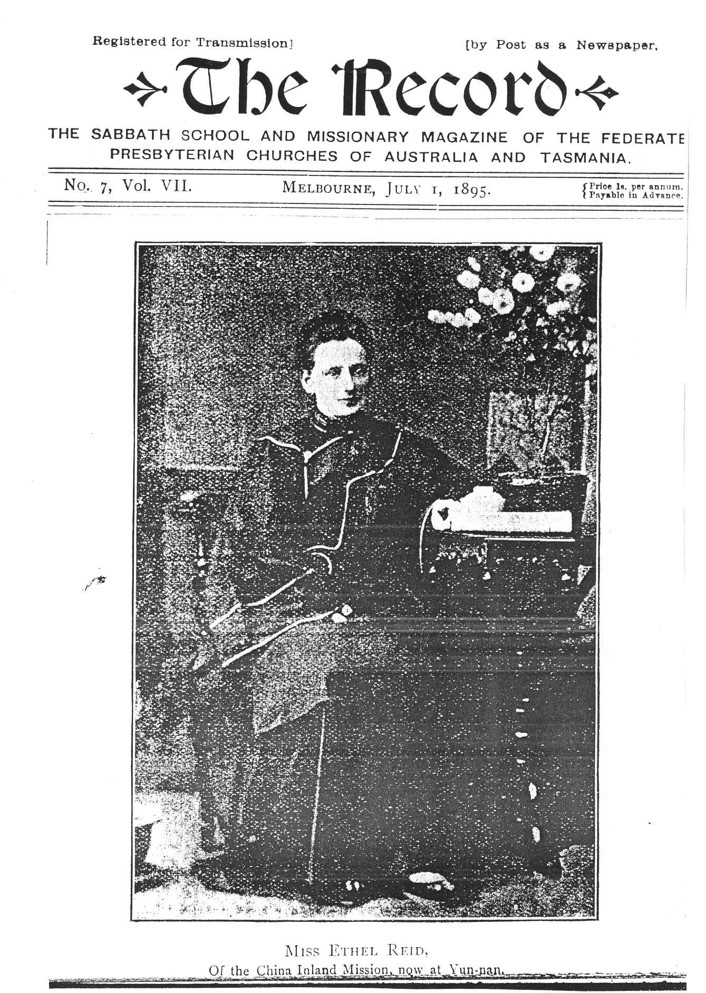Women missionaries the untold story of Australia's engagement with China
Media release When great tales are told of Australian explorers encountering China, most thoughts spring to George Morrison's trek from Shanghai to Rangoon in 1894, rarely is the journey of Mary Gaunt, or the exploits of Ellen Reid and 150 other women mentioned.
When great tales are told of Australian explorers encountering China, most thoughts spring to George Morrison's trek from Shanghai to Rangoon in 1894, rarely is the journey of Mary Gaunt, or the exploits of Ellen Reid and 150 other women mentioned.
Yet as Deakin University's expert on Australian women and China and historian Professor Sarah Paddle explained Mary Gaunt's journey in 1909 on her own across China was as significant as that of Morrison's, yet the journey was much harder for a women
"There is a lot of thinking and research done on Australian's encounters with early China, but rarely do women feature in those papers," she said.
"The men were there with mothers, wives, daughters but in fact there were a whole different cohort of women who chose and went to work in China, they were not large in terms of numbers, but they are an important part of the story of Australia's engagement with China.
"The reason they are important is because they had access to a part of China the men didn't, the women and children."
Professor Paddle is currently piecing together the stories of 150 women who went to China to work in China's Inland Mission.
"Between 1900 and 1920, 12 per cent of the people who went to China were Australians, and 60 per cent of the Australians who went to China were women," she said.
"The women in the Inland Mission wore Chinese clothes and the idea was that they would go out on horses and donkeys or be carried from village to village spreading the message," she said.
"The newsletters carried pictures that led them to believe they would be working in this world of Grand Peking and gave them the idea that they would convert people.
"The China they would be going to was a land of opium dens, women with bound feet, early marriages, bonded labour and concubines.
"My argument is that when they got there that's not what they found, they didn't find a people bound by oppression but instead a rich culture that was 6000 years old."
Professor Paddle said information on the women's views was limited and her search for information on the women had taken her from the Melbourne Library archive, to the Bible College at Lilydale, Adelaide, Sydney, London, Edinburgh and Los Angeles where other parts of the world where the archived records were held.
She had also read the 400 letters the women wrote back home which were subsequently published in the mission's newsletters.
"There is only one copy of those letters in the world," she said.
"I don't have any of their private letters and I would welcome other letters and documents on their experiences in the country.
One of the women Professor Paddle has been able to track down is Ellen Reid.
"Ellen lived in Ballarat and lived and worked in China for 11 years," she said.
"She got dysentery travelling from the East Coast of China to the interior of Yunan province – a journey which took her six months."
Professor Paddle said the journey was all the more significant because Ellen was a single, aged 24 at the time and did not speak Mandarin.
"She married an Australian missionary and made her home in in Talifu, but what is significant as was the case for many of the women there at the time, was that she didn't follow the rules of the mission central."
Professor Paddle said the women were very liberated for the times.
"They did all the things the mission would not have approved of, such as setting up opium sanctuaries, kindergartens and hospitals.
Professor Paddle said Ellen died in her early 30s in childbirth in 1903.
"On the whole the missionaries made no impact all, because they were dumbfounded by what they found when they arrived and the might and weight of the Chinese culture," she said.
"I think it is partly because the West could never meet the civilisation and culture of the East on its own terms."
